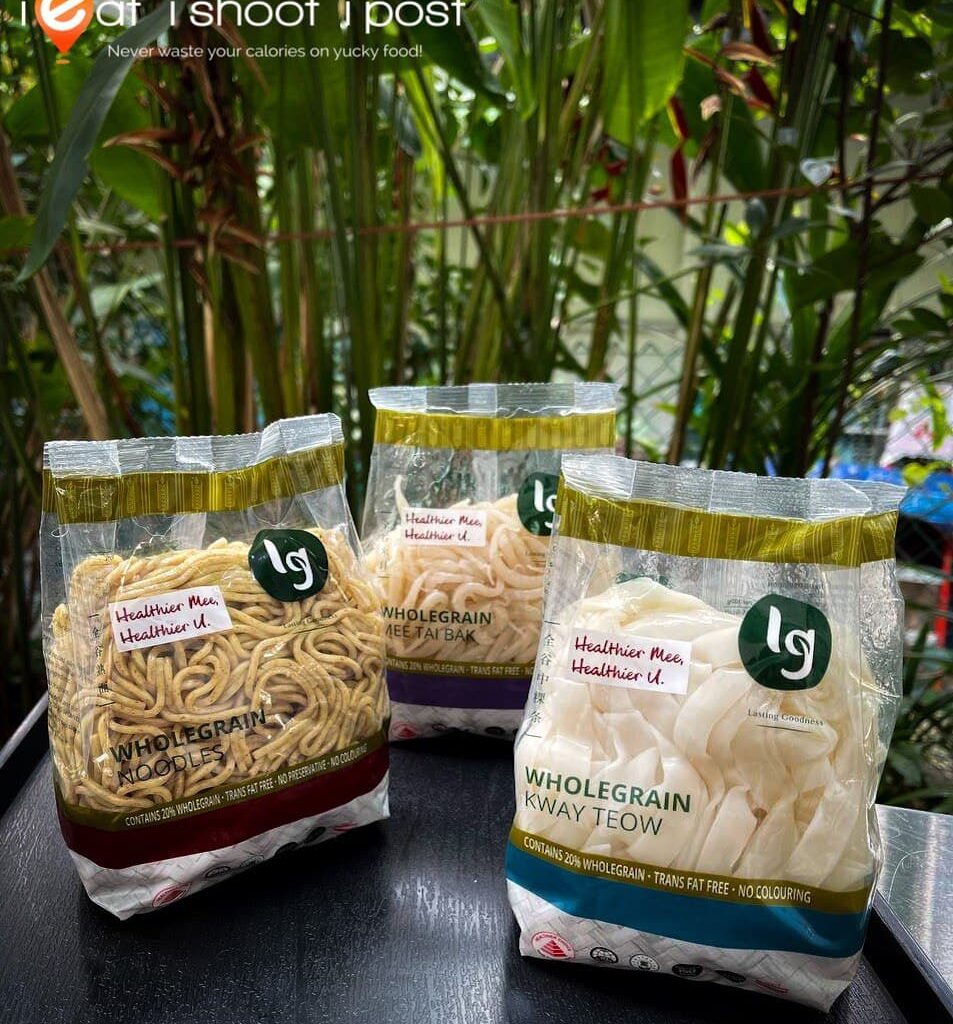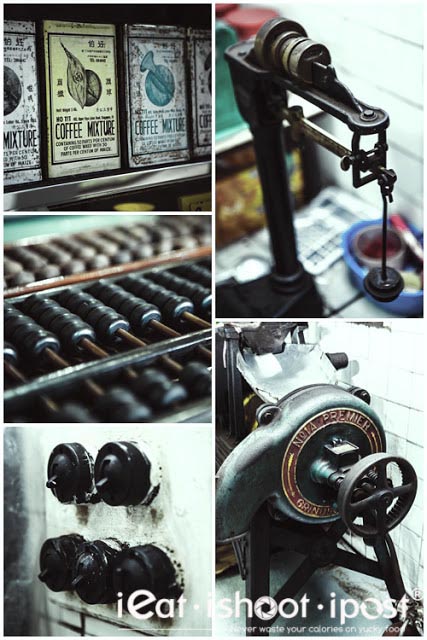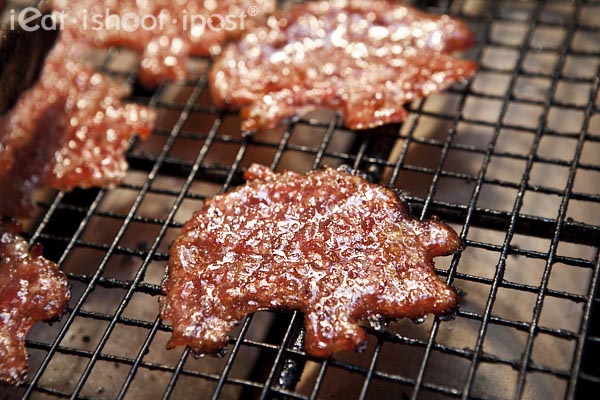
Berkshire Pork (Kurobuta) Bak Kwa
I have always wondered how Bak Kwa is made. So when Fragrance invited me to write about their newly launched Berkshire (aka Kurobuta) Pork Bak Kwa, I jumped on the opportunity to do a factory tour to see how raw pork is transformed into the tasty slivers of BBQ meat.
When I first heard of the Berkshire Pork Bak Kwa, my first reaction was one of skepticism. Yes, you can tell the difference between Kurobuta (Berkshire) and normal pork when you are eating it as shabu shabu, but can you actually tell the difference when it is marinated and made into Bak Kwa?
The process of making Berkshire Pork Bak Kwa starts with the procurement of US Berkshire Pork hams (hind legs). According to Fragrance, they procure their Berkshire Pork from Heritage Pork International, a company that prides itself in breeding 100% purebred Berkshire pigs. With the growing demand for Kurobuta pork that is fueled by the increasing popularity of Japanese cuisine worldwide, some ranches are cross breeding the Berkshire with other fast growing breeds to shorten the time to slaughter. However, in order to get that superior intramuscular fat found that is prized by the Japanese, there can be no short cuts. As a result, a number of ranches like Heritage International have formed associations to safeguard the purity of Berkshire pigs. Although they are not certified as organic pork, the pigs are bred free range with no hormones used at any stage of its growth.
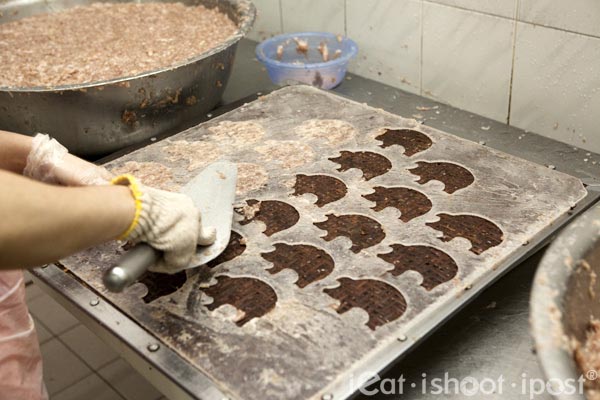
You probably know that Bak Kwa in general comes either in a sliced form where the meat fibres are still quite evident, and in a minced form which is easier to eat but lacks the satisfying chew of the sliced form. The Bak Kwa at Fragrance is somewhere in between. Instead of mincing the pork in a grinder, the pork is diced into small cubes. This ensures that the meat still retains some of its structure and is important for its juiciness by preserving the fabric of the intramuscular fat between the muscle layers. To dice the meat, it is basically put through the meat slicer three times. Once to make wide slices, the 2nd time to make strips, then the 3rd to make cubes.
The meat is then seasoned with their secret blend of 18 herbs. This again is surprising as my understanding was that the taste of Bak Kwa comes essentially from sugar and fish sauce. However the experts at Fragrance tell me that the main function of the herbs is to act as a natural preservative. As such, the company’s policy is to make a product with all natural ingredients rather than to resort to chemicals to increase its shelf life. The herbs, I am told, also keeps the Bak Kwa soft and tender even after a few days and is one of the hallmarks of their Bak Kwa.
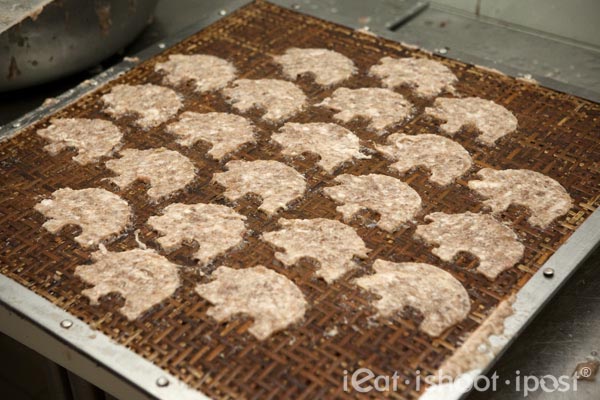
The seasoned pork is then spread thin onto a rattan mesh using a spatula and a stencil to give it a pig shape. They are still using rattan, which is the traditional way to oven dry the Bak Kwa. They did try switching to stainless steel at one stage as it was easier for maintenance. However, they reverted back to rattan when they discovered that the rattan mesh actually gave the Bak Kwa an extra dimension of flavour!

The rattan mesh is then transferred into their oven to be baked at low temperature for one and a half hours. This dries the pork and cooks it at the same time. Although the commercial oven is heated by gas, a trough of charcoal is also introduced into the oven in order to give the pork a smokey flavour.
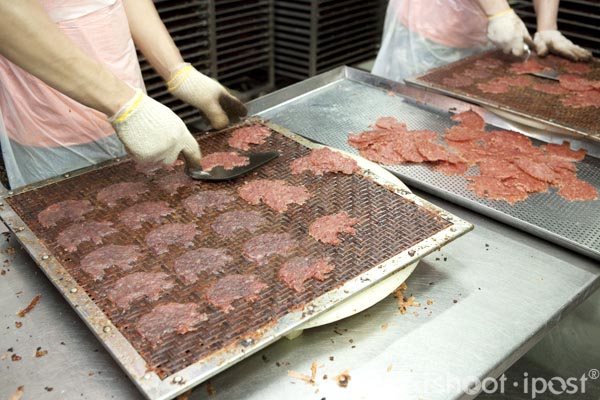
After the baking process, the pork is bright red and ready to be grilled. The grilling process turns the Bak Kwa into its familiar red colour with charred edges and caramelizes some of the sugars on the meat. They are then cooled and individually packed.
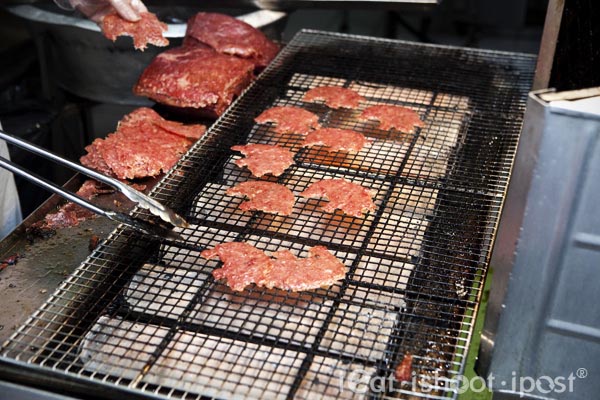
So, now that you know how Bak Kwa is made, we still need to answer the question as to whether Berkshire Pork Bak Kwa tastes different to the normal pork.
Although the marinade and the manufacturing process is the same, the use of different meats actually does change the flavour and texture profile of the end product. This is quite evident when I sampled their Turkey and Crocodile Bak Kwa. These meats are more lean and so the end product tends to be a little chewier and less juicy. I then blind tested the normal Coin Bak Kwa to Berkshire Bak Kwa on my kids on multiple occasions and they managed to pick the Berkshire Bak Kwa every time. The biggest difference is in the texture of the pork. Being more marbled, the Berkshire Bak Kwa tends to be more tender and juicy than the traditional pork variety. In terms of the taste, there is a slight difference, but not as stark as with the texture. My 9 year old daughter insists that is is just more tasty. (She doesn’t know anything about Kurobuta). The fact that the pigs are free range and hormone free will also appeal to many who are looking for a healthier product.

The Berkshire Pork Bak Kwa comes individually packed for freshness and is now available at Fragrance stores at $60 per kg. Their pork Bak Kwa is selling for $48 per kg. For more information, please check their website: www.fragrance.com.sg
This blog post was sponsored by Fragrance



